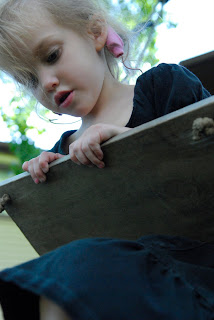Untitled from Lesley Freeman on Vimeo.
Friday, May 14, 2010
Sophie
Sunday, May 9, 2010
Working on my 30-day project



Video Job Profile
Untitled from Lesley Freeman on Vimeo.
Monday, May 3, 2010
Character Profile
Monday, March 22, 2010
Readings
I think the chapter about presenting ideas is a chapter all freelance photographers should pay attention to. It is truly vital for freelancers to understand how to pitch ideas if they want to be successful in having their ideas accepted by publications. I feel that it is important for photographers to understand the importance in being able to present ideas strongly because some people feel that photographers only take pictures, and it is the reporter that comes up with the ideas. We are just as smart and eligible to take part in presenting valid and newsworthy ideas. We just need to understand how to present our ideas’ importance. I have heard this from the very beginning of photojournalism: you must know your market. This is important so that our ideas aren’t redundant, because they will be immediately turned down by a publication, unless we can express their importance using a different viewpoint or way to tell the story. Another important aspect of presenting ideas is the fact that we must express our knowledge in why we must do a story on our idea. It is not enough to just say, “I think we should do __.” We must include valid reasons as to why our idea is important enough to pursue. We have to persuade editors the importance of our ideas by giving them facts and helping them understand why our idea would be so strong for their publication. I also think that it is important for photographers to understand how to pitch their story ideas. Our ideas aren’t anything if we can’t get editors to even consider them because our pitch isn’t right. Being concise, knowledgeable, and understanding what to include in the pitch (like a portfolio or examples of the visual possibilities) is key for editors. I hope that more photographers can take this advice and show that reporters or editors aren’t the only people that can think of valuable ideas for publications. This chapter has helped me take more into account when thinking of ideas for the future and how I would go about getting them into a publication.
Sunday, March 7, 2010
Multimedia POYi
Sunday, February 28, 2010
POYi Issue Reporting Picture Story
Monday, February 22, 2010
One Day Story

Shelle Bartram helps assemble the Frankenstein Monster and the Bride themed float for the Mardi Gras parade on Saturday, February 13, 2010. Bartram has attended and helped the same Krewe with Mardi Gras floats for ten years.

Thousands of beads are placed along the inside of the Frankenstein and the Bride float for easy access to throw during the Mardi Gras parade on Saturday, February 13, 2010.

Fans scream and grab beads while floats drive by during the Mardi Gras parade in St. Louis, MO on Saturday, February 13, 2010.

Michelle Younce gets the crowd to yell louder for her beads during the Mardi Gras parade in St. Louis, MO on Saturday, February 13, 2010. This is Younce’s second year participating on this float.

Nancy Fish helps with the tear our of the float by throwing things away after the Mardi Gras parade in St. Louis, MO on Saturday, February 13, 2010. The float must park next to one of several dumpsters and disassemble the float.

